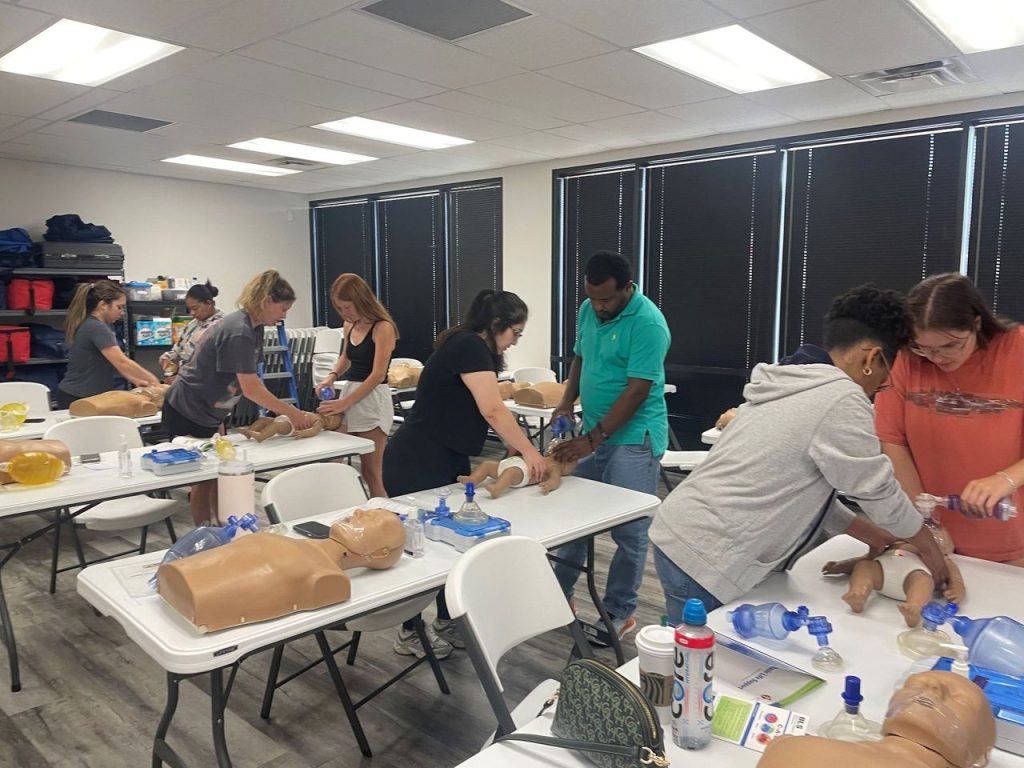Return of Spontaneous Circulation (ROSC) represents a critical milestone in resuscitation efforts following cardiac arrest. The achievement of ROSC—when a pulse returns after cardiac arrest—signifies the difference between life and death for countless patients each year. Understanding the multitude of factors that influence ROSC success rates is essential for healthcare professionals seeking to improve outcomes in emergency cardiac care.
Key Determinants of ROSC Success Rates
The journey from cardiac arrest to successful resuscitation involves a complex interplay of variables. Research consistently demonstrates that several key elements significantly impact whether ROSC will be achieved and sustained.
Time to CPR Initiation
Perhaps the most crucial factor affecting ROSC success rates is the time elapsed between collapse and the initiation of cardiopulmonary resuscitation (CPR). When cardiac arrest occurs, every minute without intervention decreases survival chances by 7-10%. Studies show that immediate CPR can double or triple survival rates.
The American Heart Association emphasizes the “Chain of Survival,” highlighting early recognition and activation of emergency response systems as fundamental first steps. In settings where bystanders initiate CPR promptly, ROSC success rates have been documented to increase by up to 45% compared to scenarios where CPR begins only upon emergency medical services (EMS) arrival.
Quality of CPR Performance
Beyond timing, the quality of CPR delivery critically impacts ROSC success rates. High-quality CPR includes:
- Appropriate compression depth (2-2.4 inches or 5-6 cm for adults)
- Adequate compression rate (100-120 compressions per minute)
- Complete chest recoil between compressions
- Minimal interruptions to compressions
- Proper ventilation techniques
Studies examining ROSC success rates demonstrate that maintaining proper compression depth throughout resuscitation efforts can increase positive outcomes by approximately 30%. Furthermore, research indicates that compression fractions—the proportion of time during resuscitation when compressions are being performed—should exceed 80% for optimal ROSC potential.
Early Defibrillation
For shockable rhythms like ventricular fibrillation (VF) and pulseless ventricular tachycardia (VT), timely defibrillation stands as another critical factor influencing ROSC success rates. Public access defibrillation programs have demonstrated significant improvements in survival outcomes.
When defibrillation occurs within 3-5 minutes of collapse, ROSC success rates may reach 50-70% for witnessed VF arrests. Each minute of delay reduces success probability by approximately 10%. Integrated community response systems that incorporate automated external defibrillators (AEDs) in public spaces have shown measurable improvements in ROSC success rates in urban environments.
Patient-Specific Factors Affecting ROSC Success Rates
While emergency response variables are crucial, patient-specific characteristics also substantially impact outcomes.
Underlying Cause of Arrest
ROSC success rates vary considerably depending on the precipitating cause of cardiac arrest. Primary cardiac causes, particularly acute coronary syndromes, typically demonstrate higher ROSC rates compared to arrests stemming from non-cardiac origins such as trauma, drowning, or drug overdose.
Cardiac arrests resulting from respiratory failure present unique challenges. In these cases, addressing the underlying hypoxia becomes paramount to achieving sustainable ROSC. Effective ventilation strategies combined with high-quality compressions yield superior outcomes compared to compression-only approaches for these specific scenarios.
Pre-existing Medical Conditions
Pre-arrest health status significantly influences ROSC success rates. Patients with pre-existing cardiovascular disease often experience more complex resuscitation scenarios. Chronic conditions like:
- Heart failure
- Previous myocardial infarction
- Renal dysfunction
- Diabetes mellitus
- Pulmonary disease
All correlate with reduced ROSC success rates. Age represents another significant factor, with elderly patients typically demonstrating lower ROSC rates than their younger counterparts, even when controlling for comorbidities.
Metabolic Factors
The biochemical environment at the time of cardiac arrest profoundly impacts ROSC success rates. Severe acidosis, hyperkalemia, hypoxemia, and hypothermia all present unique challenges to resuscitation efforts. Point-of-care testing during resuscitation allows for targeted interventions addressing these metabolic derangements.
Research examining ROSC success rates indicates that addressing treatable metabolic abnormalities during resuscitation may improve outcomes by 15-25% in certain patient populations. The ability to identify and correct these imbalances in real-time represents an evolving area of emergency cardiac care.
Pharmacological Interventions and ROSC Success Rates
The pharmacological approach to cardiac arrest continues to evolve based on emerging evidence regarding ROSC success rates.
Epinephrine Administration
Epinephrine (adrenaline) remains a cornerstone medication in advanced cardiac life support protocols. Its alpha-adrenergic effects increase coronary and cerebral perfusion pressures during CPR, potentially enhancing ROSC success rates. However, timing and dosing require careful consideration.
Current evidence suggests that while epinephrine administration increases ROSC success rates, its impact on long-term neurological outcomes remains controversial. Early administration (within 5 minutes of arrest) appears to offer the most favorable balance between achieving ROSC and preserving neurological function.
Antiarrhythmic Medications
For shockable rhythms resistant to initial defibrillation attempts, antiarrhythmic agents may improve ROSC success rates. Amiodarone, lidocaine, and magnesium sulfate (in specific scenarios) each play potential roles in management algorithms.
Recent studies comparing amiodarone and lidocaine suggest comparable ROSC success rates between these agents, though amiodarone may offer slight advantages in certain patient subgroups. The timing of administration appears crucial, with earlier intervention correlating with improved outcomes.
Systems-Based Approaches to Improving ROSC Success Rates
Beyond individual interventions, system-wide protocols and organizational factors significantly impact ROSC success rates.
Team Performance and Communication
Effective resuscitation requires seamless team coordination. Research demonstrates that high-performing teams with clear role assignments and closed-loop communication achieve superior ROSC success rates compared to teams lacking these attributes. Simulation-based training programs focusing on team dynamics have shown measurable improvements in performance metrics related to ROSC.
Regular debriefing practices following resuscitation events allow teams to identify opportunities for improvement. Organizations implementing structured debriefing protocols report incremental improvements in ROSC success rates over time as team performance optimizes.
Protocol Adherence and Innovation
Standardized protocols provide frameworks supporting consistent, high-quality care. However, emerging evidence suggests that protocolized resuscitation balanced with individualized considerations based on arrest characteristics may yield optimal ROSC success rates.
The implementation of real-time feedback devices during CPR allows providers to optimize compression quality, directly impacting ROSC success rates. Organizations incorporating these technologies report improvements in compression depth consistency and reductions in compression interruptions.
Post-ROSC Care and Its Impact on Sustained Success
Achieving ROSC represents only the first milestone in patient recovery. Post-resuscitation care profoundly influences whether initial success translates to meaningful survival.
Targeted Temperature Management
Evidence strongly supports temperature control following cardiac arrest. Whether through therapeutic hypothermia or targeted temperature management, controlling core body temperature between 32-36°C for 24-48 hours following ROSC improves neurological outcomes in many patient populations.
Centers implementing comprehensive post-arrest care protocols incorporating temperature management report higher rates of neurologically intact survival compared to facilities without standardized approaches.
Hemodynamic Optimization
Maintaining adequate tissue perfusion following ROSC requires careful hemodynamic management. Hypotension after ROSC correlates strongly with increased mortality and neurological injury. Early goal-directed therapy addressing blood pressure, cardiac output, and tissue oxygenation improves outcomes following successful resuscitation.
The implementation of specialized post-cardiac arrest care units demonstrates promising results, with some centers reporting improvements in survival to discharge rates of 15-20% compared to conventional care approaches.
Future Directions in Improving ROSC Success Rates
The science of resuscitation continues evolving, with several innovative approaches showing promise for enhancing ROSC success rates.
Extracorporeal CPR
For select patients with refractory cardiac arrest, extracorporeal membrane oxygenation (ECMO) during resuscitation—termed ECPR—offers an advanced intervention that may improve ROSC success rates in otherwise fatal scenarios. While resource-intensive, early data from specialized centers suggests ECPR may salvage previously unsalvageable cases when implemented within strict protocols.
Precision Medicine Approaches
The future of resuscitation science likely involves increasingly personalized approaches. Real-time physiological monitoring during CPR allows for dynamic adjustments to compression parameters based on individual patient responses rather than standardized algorithms. Early research suggests this tailored approach may optimize ROSC success rates across diverse patient populations.
Conclusion: The Path to Improved ROSC Success Rates
The journey toward optimizing ROSC success rates requires integrated approaches combining timely recognition, high-quality CPR, appropriate defibrillation, targeted pharmacological interventions, and comprehensive post-resuscitation care. As research advances, the incorporation of evidence-based practices into standardized protocols offers the best opportunity for continued improvements in survival outcomes.
Healthcare professionals committed to excellence in emergency cardiac care recognize that each link in the chain of survival requires continuous quality improvement. From community education initiatives to specialized post-arrest care units, every element in the system plays a vital role in determining ROSC success rates.
Take Action to Enhance Your Resuscitation Skills
Understanding the factors that impact ROSC success rates remains essential for all healthcare providers. Maintaining current, evidence-based knowledge and skills through certified training ensures you’re prepared to provide optimal care when cardiac emergencies arise.
For healthcare professionals in the Nashville area seeking to enhance their resuscitation capabilities, CPR Nashville offers comprehensive American Heart Association certification courses. Whether you need BLS for Healthcare Providers, ACLS certification in Nashville, PALS, or basic CPR training, their stress-free, hands-on approach ensures competence and confidence in emergencies.
Invest in your professional development and your patients’ outcomes through CPR certification in Nashville. CPR Nashville’s experienced instructors provide the knowledge and skills necessary to make a critical difference when ROSC success rates matter most. Contact Best CPR in Nashville today to schedule your certification or renewal course and join the community of healthcare providers committed to excellence in emergency cardiac care.





